In This Article
Curious about a destination with medieval charm, forested mountains, and vibrant cities? These places to visit in Romania blend history, nature, and local flavor for an unforgettable Eastern European adventure.
If you are in a hurry, I recommend:
- Explore the cobblestone streets and colorful houses of Bra?ov in the heart of Transylvania.
- Visit Bran Castle, the legendary home of Dracula perched above a mountain pass.
- Stroll through the medieval citadel of Sighi?oara, a UNESCO World Heritage Site.
- Discover the vibrant culture and grand architecture of Bucharest, Romania’s capital.
- Relax in the scenic countryside of Maramure?, known for wooden churches and folk traditions.
- Cruise the wildlife-rich wetlands of the Danube Delta, Europe’s second-largest river delta.
- Hike the Carpathian Mountains for alpine views, castles, and quiet villages.
Recommended Romania Destinations:
1. Bucharest
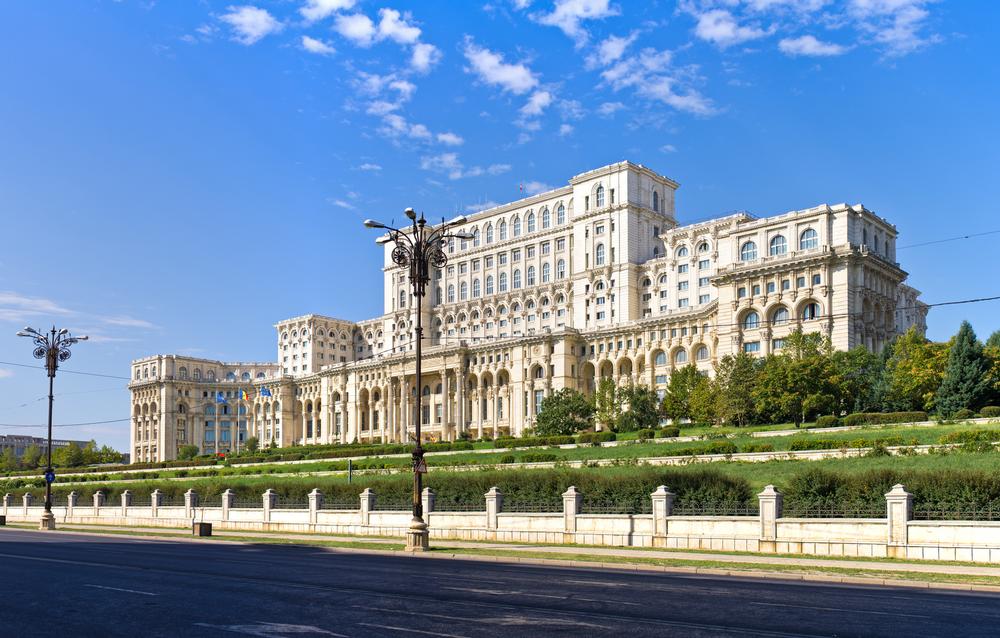
© Courtesy of CCat82 - Fotolia.com
Bucharest, Romania’s capital and commercial and cultural center, is located in southern Romania. The old city is reinventing itself again after surviving earthquakes, two wars, and communism. The city center is dominated by the massive Palatul Parlamentului government building, a monument to Nicolae Ceausescu’s megalomania. The historic Lipscani district is now known for its lively nightlife scene thriving around the precious yet tiny Eastern Orthodox Stavropoleos Church and the 15th-century Curtea Veche Palace. Catch a concert of the Romanian George Enescu Philharmonic at the Romanian Athenaeum.
Stroll through the lovely Calea Victoriei street to see elegant belle époque monuments and buildings. Shady walnut tree-lined Soseaua Kiseleff will surprise you with Bucharest's version of Paris's Arc de Triomphe. Enjoy fresh air and green spaces of the Herastrau Park and learn about Romanian history at the open-air Dimitrie Gusti National Village Museum.
2. Alba Iulia
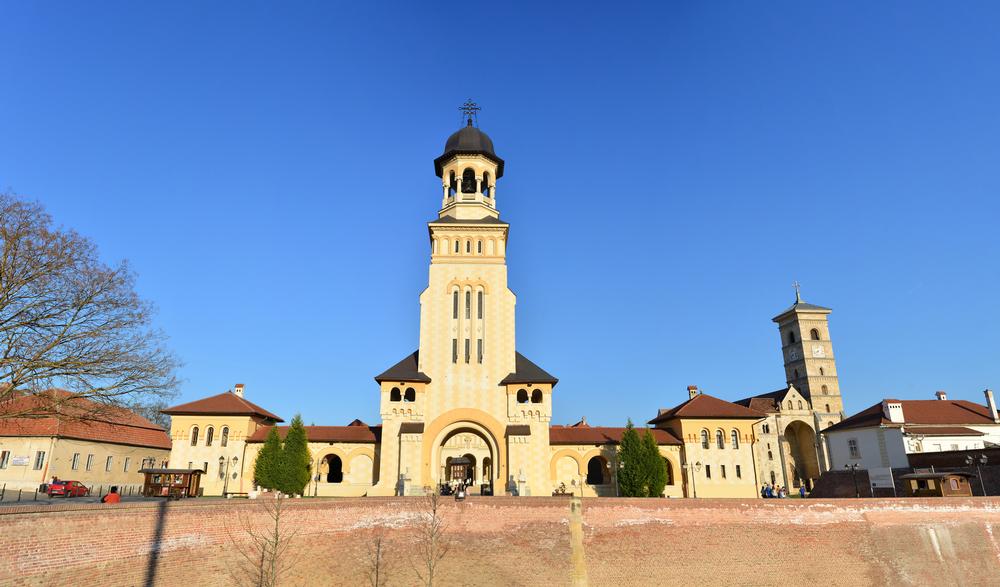
© Courtesy of tony4urban - Fotolia.com
Alba Iulia
was a capital in the Roman Empire more than 2,000 years ago as well as a medieval capital of Transylvania and the place where the modern state of Romania was born. Located on the Transylvanian plateau on the River Mures near the Apuseni Mountains, it is the oldest and probably the most beautiful city in Romania.
Stroll along the tree-lined wide streets of the massive star-shaped 18th-century Habsburg citadel, visit ornate the Roman Catholic cathedral, the oldest in Transylvania, the Batthyaneum Library with 60,000 rare documents, and the Orthodox Cathedral of the Reunification, where the first king of the unified Romania was crowned.
Learn about the rich history of Alba Iulia at the National Museum of Unification at the beautiful 18th-century Union Hall. Just outside the city are two large national parks –the Apuseni and Retezat.
Romantic Romania Destinations:
3. Apuseni National Park

© Courtesy of Tomasz Wozniak - Fotolia.com
Apuseni National Park is located in western Romania in the Apuseni Mountains, but also includes parts of the Bihor and Vladeasa Mountains. The park was created to protect unique Romanian cave fauna and is famous for its caves, which have revealed traces of prehistoric man and ice-age animals as well as populations of rare bats. The park is richly forested, with spruce at higher altitudes and beech lower down, and the interesting landforms present in the park are due to the limestone rocks that underlie most of it.
There are fascinating sculptured ridges, vanishing underground rivers, and beautiful caves with delicate natural decorations. Apuseni National Park is a heaven for hikers and cavers, but be prepared for some serious work; there are no nice trails or and signposts.
4. Arad

© Courtesy of Rechitan Sorin - Fotolia.com
Located on the bank of the Mure? River in western Romania, Arad is one of the Romania’s most prosperous cities, a busy industrial center and major transportation hub. It is also a lively university town and is home to two major universities, an old Romanian Orthodox Theological Seminary, a music conservatory, and a teachers’ training school. Arad was established in the 11th century and was a major trading post in the 16th century during the Turkish occupation. The heart of the city is the beautiful, wide, tree-lined Bulevardul Revolutiei, accompanied by fascinating examples of architecture in a mix of styles, such as the huge, bright white 19th-century City Hall Palace, the 1911 Palace of Culture, the neo-Gothic Red Church, the domed Roman Catholic church and the neoclassical State Theatre. In the old town west of Piata Avram Iancu is a large open-air market as well as a beautiful baroque orthodox cathedral and the old water tower, which has been converted into a museum. Check out the star-shaped Vauban-style fortress and the Old Jewish Quarter with its rich history.
Family-friendly Romania Destinations:
5. Bacau
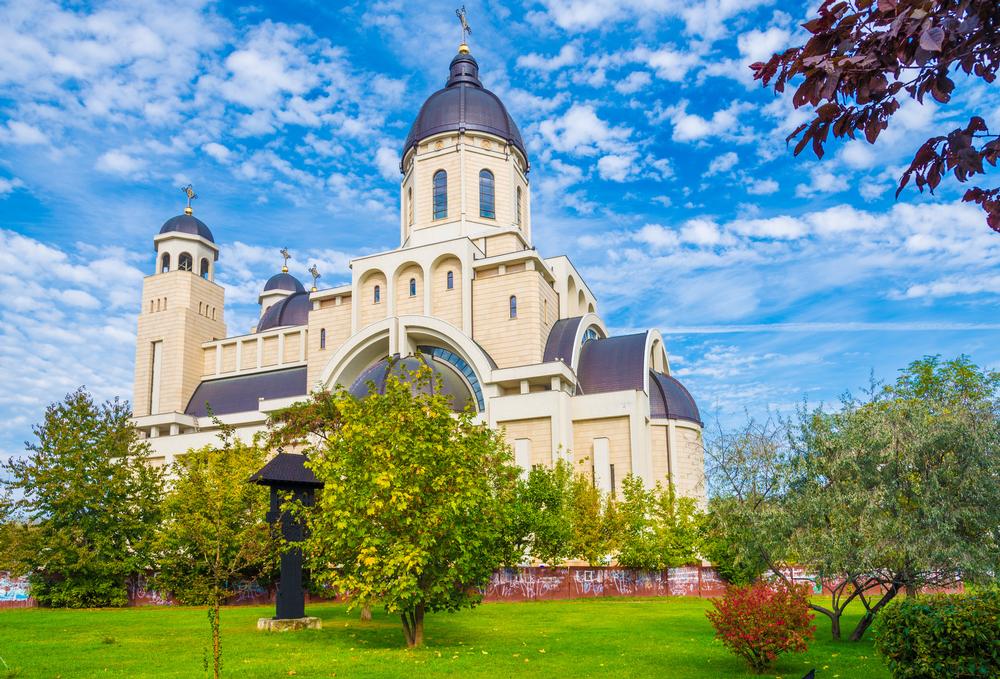
© Courtesy of Balate Dorin - Fotolia.com
Located in eastern Romania in the Moldavia province at the foothills of the Carpathian Mountains near the confluence of the Siret and Bistri'a and rivers, Bacau is a modern city with a rich past that dates back to the 4th century. Visit the impressive Magura Ocnei Monument, dedicated to the Romanian soldiers who died in the WWI, located on the Magura Hill. Learn about the local culture at the George Bacovia Memorial House. The beautiful 19th-century castle of the Stirbei’ family will give you a glimpse of the life of local nobility at that time. Catch a concert at the Rosetti Tescanu – George Enescu Cultural Center. The Saint Barbara Church is small but lovely and is located in a huge Trotus Salt Mine. Just outside Bacau is beautiful Slanic Gorge and Waterfall and the healing spa at the Slanic Moldova Mineral Springs.
6. Baia Mare
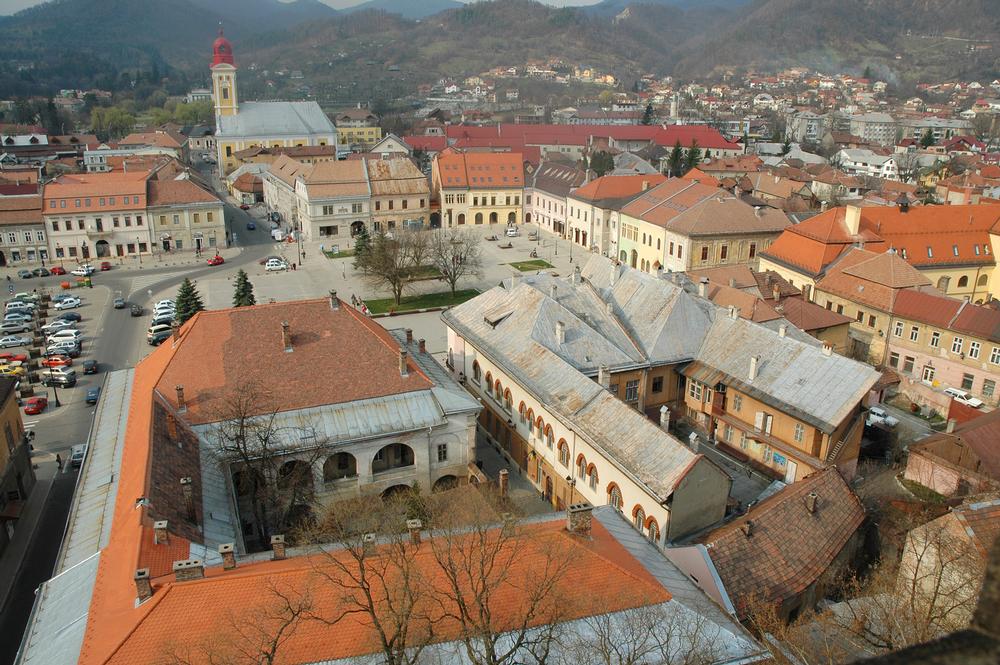
© Courtesy of salajean - Fotolia.com
Located in northwestern Romania on the Sasar River, Baia Mare is an ancient mining town and a key Romanian mining center, extracting silver, gold, and other metals for the last 2,000 years. The town has an old yet beautifully preserved main square known as Piata Libertatii, with the oldest house dating back to 1440. The house used to be a part of the castle belonging to a Transylvanian prince, Iancu de Hunedoara. The Casa Elizabeta, named for the prince’s wife, is used to host art exhibits. The stately Gothic watchtower, Stephen’s Tower, from the same period stands 120 feet tall on the same square. On another 15th-century square, Piata Izvoarelor, is the Butcher’s Tower, part of the medieval 15th-century fortifications, as well as an open-air market. The Baia Mare History and Archaeology Museum, located in the magnificent 18th-century baroque treasury building, features exhibits on the town’s mining history.
Unique Romania Destinations:
7. Baile Herculane
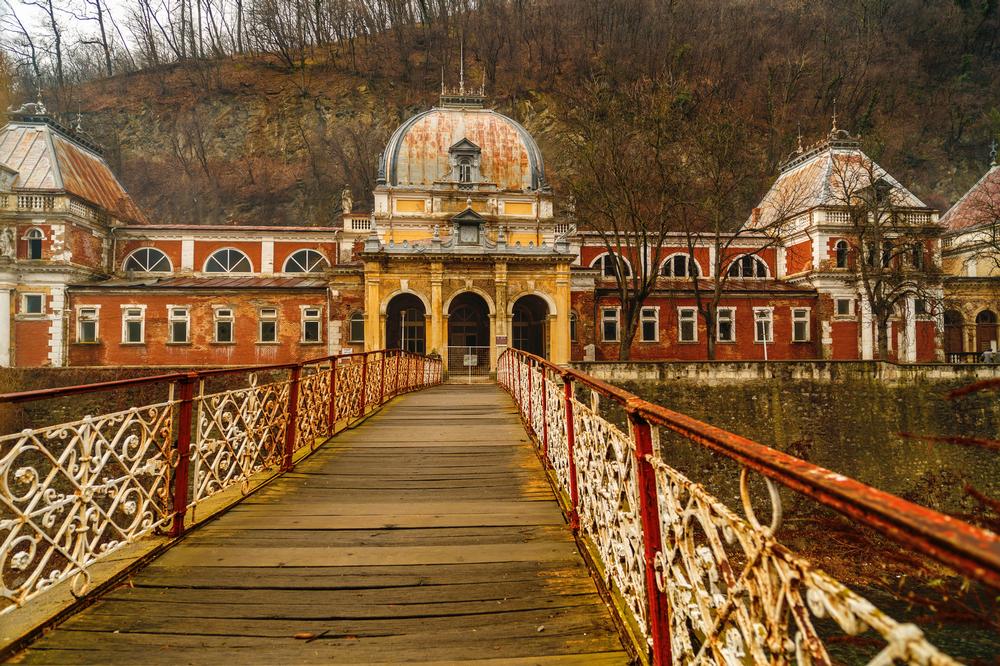
© Courtesy of czamfir - Fotolia.com
Baile Herculane is a small Romanian town in the valley of the Cerna River, between the Mehedinti and the Cerna Mountains, a few kilometers from the city of Drobeta Turnu Severin. The town is famous for its 16 thermal springs, each with different mineral content, known for their healing powers long before Romans – there are traces of human habitation in the nearby caves from the Paleolithic era. According to a local legend, the divine Roman hero Hercules came to rest and heal in its waters – there is even a plaque with the inscription Ad Aquas Herculis Sacras from 153 A.D. The Roman aristocracy loved Baile Herculane, as did the rich and nobles of later centuries. The Nicolae Cena Museum tells the story of the city history, while the city’s historical center is full of beautiful buildings from various eras, such as the imperial pavilions and the railway station from 1878. Today’s Baile Herculane has a range of spas and hotels for modern health tourists. Not far from the city is large Valea Cernei National Park, with great hiking trails and beautiful landscapes.
8. Bran
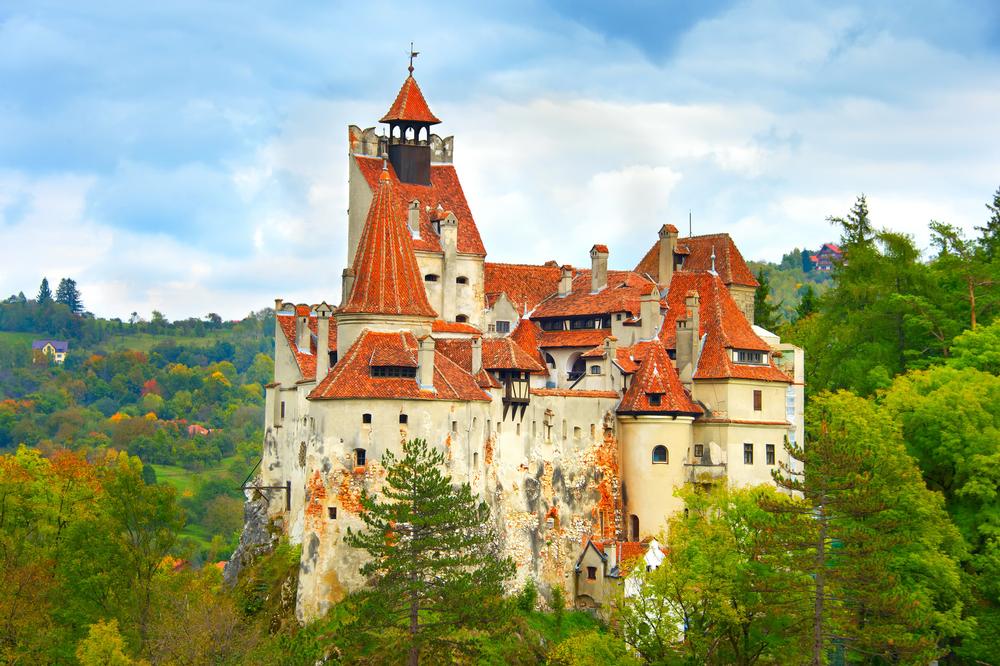
© Courtesy of joyt - Fotolia.com
The fairytale Bran fortress, perched high on the rocky bluff, has fired the imagination for centuries and is believed by the thousands of tourists who visit it today to be the bloody lair of Vlad Tepes, or Vlad the Impaler, the inspiration for the infamous Count Dracula. History portrays Vlad more as the protector of Vallachia, but that does not prevent souvenir sellers from taking advantage of gullible tourists. The Bran castle is ominously shadowed by the Bucegi Mountains and the Piatra Craiului massif. There is a nice museum with historic artifacts inside the castle and there are numerous guided tours. The castle was originally built by the Teutonic Order in the 13th century, destroyed by Moguls in 1242, rebuilt in stone in 1377 and completely restored by Queen Marie in 1922. There are five picturesque villages in the surrounding hills as well as lovely hiking and climbing trails for those not afraid of bumping into some Vlad’s vampire relatives.
If you are a photographer, don't miss:
9. Brasov
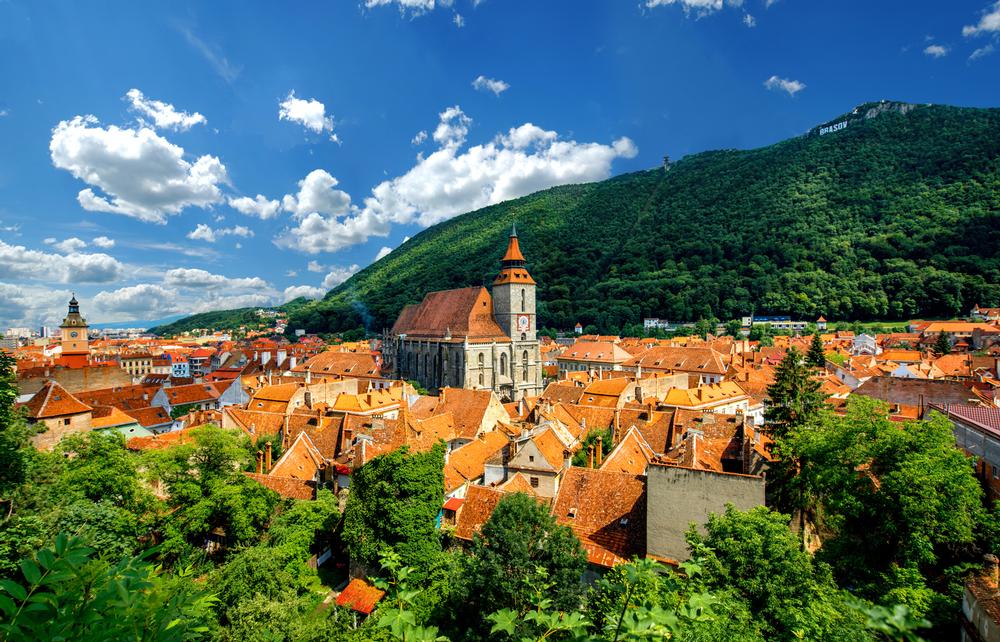
© Courtesy of rh2010 - Fotolia.com
Brasov is a small, picturesque Romanian city in the Transylvania region, surrounded on all sides by the massive Carpathian Mountains. In the heart of the city are the remnants of the medieval Saxon walls and the stately Gothic Black Church, surrounded by lively cafes. The charming old cobblestoned streets are lined with ornate baroque buildings and the spacious Piata Sfatului square is home to the history museum Casa Sfatului, once a town hall. The best way to explore the city is aboard a double-decker bus, which passes by all the main sites. Just outside the city are a brown bear sanctuary and the imposing church of Prejmer.
10. Illustrated Map of Romania with Landmarks and Nature
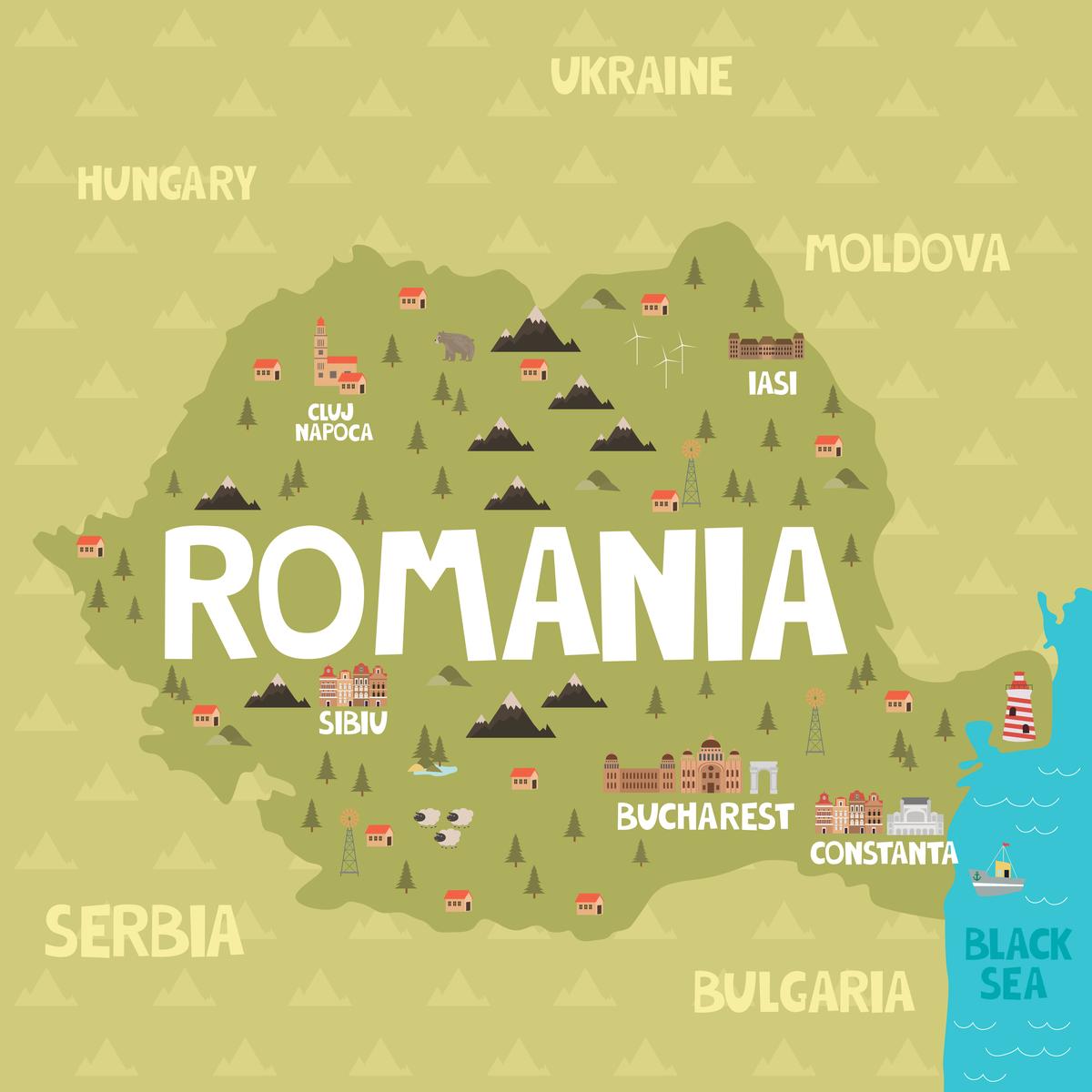
© miobuono/stock.adobe.com
📔 I get asked this a lot so I decided to include it:
- Q: Where is Romania located?
- A: Located in southeastern Europe, Romania is primarily known for its massive Carpathian Mountains and the famous region of Transylvania.
- Q: What historical cities can be found in Romania?
- A: Visitors can explore Roman cities that are over 2,000 years old, such as Alba Iulia, which showcase Romania's rich history.
- Q: Are there traditional villages in Romania?
- A: Yes, Romania is home to villages like Maramures, where it feels like time has stopped, offering a glimpse into traditional ways of life.
- Q: What kind of architectural attractions can visitors expect?
- A: Romania boasts beautiful old cities full of baroque architecture, such as the stunning city of Oradea.
- Q: Does Romania have seaside resorts?
- A: Yes, visitors can enjoy posh seaside resorts like Constanta, which offer beautiful coastal experiences.
- Q: What religious and cultural landmarks can be found in Romania?
- A: Romania is home to hundreds of churches, monasteries, and synagogues, reflecting its diverse cultural heritage.
- Q: Are there natural attractions in Romania?
- A: Romania features some of the most beautiful parks in Europe, offering breathtaking landscapes and serene nature escapes.
Map:
Plan Your Trip












